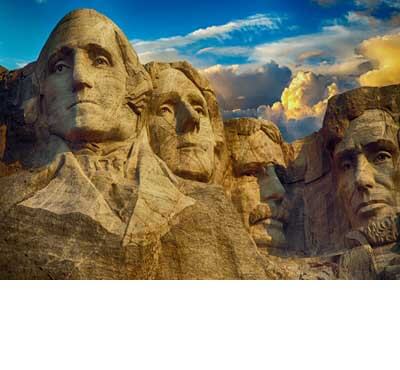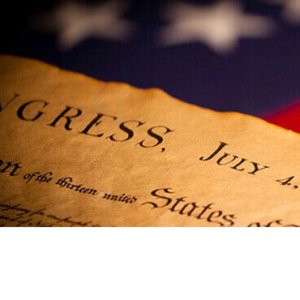- 1.1 Classify different types of governing systems.
- 1.2 Analyze how the tradeoffs perspective confronts the challenges posed by the pluralism-elitism debate.
- 1.3 Identify factors of political motivation for American citizens.


Built from OpenStax’s American Government
American Government
This course explores the structure of American government. It will provide students with knowledge of the three branches of government at the national and state level. Students will learn more about political systems through an analysis of the U.S. Constitution, federalism, political parties, and interest groups. In addition, the course will examine civic society and the policy-making process. Upon completion, students will have a solid foundation in the concepts that have shaped the United States of America.
Learning Objectives/
- 2.1 Summarize the development of American political thought leading up to the Declaration of Independence.
- 2.2 Identify benefits and drawbacks of the Articles of Confederation.
- 2.3 Describe major debates and compromises incorporated into the Constitution.
- 2.4 Appraise the tensions between the Federalists and Anti-Federalists during the ratification process.
- 2.5 Explain the development of Constitutional amendments, including the Bill of Rights.
- 3.1 Explain federalism as outlined in the Constitution.
- 3.2 Describe the development of different conceptions of federalism.
- 3.3 Explain federal grant types and their impact on state and local governments.
- 3.4 Analyze competitive federalism and some of the issues over which states and federal government have contended.
- 3.5 Examine the advantages and disadvantages of federalism.
- 4.1 Differentiate civil liberties and civil rights.
- 4.2 Explain how the scope of civil liberties evolved.
- 4.3 Identify the rights of the accused.
- 4.4 Analyze how the Bill of Rights impacts other rights, including the right to privacy.
- 5.1 Explain the standards of review used to judge the constitutionality of discriminatory laws and actions.
- 5.2 Explain how government actors and activists shape African American civil rights.
- 5.3 Analyze the expansion and limitations of women’s rights.
- 5.4 Examine the rights of Native Americans, Alaskan Natives, and Native Hawaiians.
- 5.5 Discuss the expansion of equal protection to additional marginalized groups.
- 6.1 Analyze the political socialization process and how it affects public opinion.
- 6.2 Explain how public opinion is measured and quantified.
- 6.3 Identify major trends in public opinion.
- 6.4 Describe the relationship between public opinion and public policy.
- 7.1 Compare the voter registration policies of different states.
- 7.2 Examine trends in voter turnout.
- 7.3 Explain the stages of presidential elections.
- 7.4 Identify strategies employed to affect vote choice.
- 7.5 Explain processes of direct democracy.
- 8.1 Summarize types of media and their respective audiences.
- 8.2 Discuss the evolution of major media formats.
- 8.3 Identify regulations placed upon media.
- 8.4 Examine media bias in political reporting.
- 9.1 Define political parties and interest groups.
- 9.2 Explain why the U.S. has a two party system.
- 9.3 Explain the evolution of American party systems and realignments.
- 9.4 Evaluate the impact of divided government and partisan polarization on the legislative process.
- 10.1 Identify different types of interest groups.
- 10.2 Describe reasons why individuals join interest groups.
- 10.3 Explain trends in interest group participation.
- 10.4 Identify interest group tactics.
- 10.5 Evaluate the constitutionality of regulations placed upon interest group activity.
- 11.1 Examine the powers and functions of Congress.
- 11.2 Explain reasons for high congressional reelection rates.
- 11.3 Discuss congressional representation.
- 11.4 Outline the organizational structure of the House and Senate.
- 11.5 Explain the legislative process.
- 12.1 Describe the evolution of the Electoral College and presidential powers.
- 12.2 Evaluate the Electoral College and the process electing a president.
- 12.3 Explain presidential transitions.
- 12.4 Discuss the utility of going public.
- 12.5 Identify presidential actions that have direct policy implications.
- 13.1 Explain the role of the courts and how judicial decisions can have legislative effects.
- 13.2 Outline the jurisdictions of the dual court system.
- 13.3 Explain the process of judicial appointments.
- 13.4 Describe the features, processes, and procedures of the Supreme Court.
- 13.5 Identify influences on judicial decision-making.
- 14.1 Explain the balance of power between federal, state, and local government as demonstrated through fiscal policy.
- 14.2 Explain state level variation in political culture.
- 14.3 Discuss the powers and functions of state legislatures and governors.
- 14.4 Evaluate the costs and benefits of state legislative term limits.
- 14.5 Explain the difference between county and city government.
- 15.1 Discuss the evolution of the bureaucracy.
- 15.2 Explain the shift from a spoils system to a merit based system.
- 15.3 Differentiate types of federal bureaucracies.
- 15.4 Evaluate the effectiveness of Congressional oversight.
- 16.1 Explain public policy.
- 16.2 Identify different types of public policy and their impact on how goods are transferred within a society.
- 16.3 Discuss major domestic policy areas.
- 16.4 Explain how policymakers engage in the public policy process.
- 16.5 Analyze fiscal and monetary policy.
- 17.1 Describe foreign policy objectives and types.
- 17.2 Distinguish sharply focused foreign policy from broadly focused policy.
- 17.3 Examine the roles of various actors, including the President, in making and implementing foreign policy.
- 17.4 Discuss major events that have shaped U.S. foreign policy.
Be the first to review “American Government”
You must be logged in to post a comment.







There are no reviews yet.